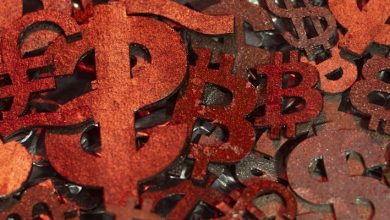How to Create a Robust Tokenomics Model for Your Project

- Understanding the basics of tokenomics
- Key components of a successful tokenomics model
- Designing a token economy that incentivizes users
- Balancing token supply and demand for sustainability
- Strategies for token distribution and allocation
- Ensuring transparency and trust in your tokenomics model
Understanding the basics of tokenomics
Tokenomics is a crucial aspect of any blockchain project, as it refers to the design and implementation of a token within an ecosystem. Understanding the basics of tokenomics is essential for creating a successful project.
One key element of tokenomics is the token supply, which refers to the total number of tokens that will ever be created. This is important because it can impact the value and scarcity of the tokens. Another important factor is token distribution, which determines how tokens are allocated among stakeholders such as investors, team members, and the community.
Token utility is also a critical component of tokenomics, as it defines the purpose and functionality of the token within the ecosystem. Tokens can serve various functions, such as payment for goods and services, access to certain features, or governance rights within the project.
Furthermore, tokenomics also includes the token economics, which refers to the economic model behind the token. This involves factors such as token inflation, deflation, and the mechanisms for token burning or staking. These economic principles can help incentivize certain behaviors and drive value for the token.
In conclusion, a robust tokenomics model takes into account all of these factors to create a sustainable and successful project. By understanding the basics of tokenomics and carefully designing the token economy, project creators can ensure the long-term viability and success of their token.
Key components of a successful tokenomics model
When creating a robust tokenomics model for your project, it is essential to consider the key components that contribute to its success. These components play a crucial role in determining the viability and sustainability of your token economy. By focusing on these key aspects, you can ensure that your project has a solid foundation and is well-positioned for growth and success.
- Token Utility: One of the most important components of a successful tokenomics model is the utility of the token. The token should have a clear and valuable purpose within the ecosystem of your project. This can include providing access to services, enabling voting rights, or facilitating transactions.
- Token Distribution: Another critical aspect to consider is the distribution of tokens. A well-thought-out distribution strategy can help create a fair and equitable ecosystem where all participants have a stake in the project’s success. This can involve mechanisms such as token sales, airdrops, or staking rewards.
- Economic Incentives: Economic incentives are essential for driving participation and engagement within your token ecosystem. By designing incentives such as yield farming, liquidity mining, or staking rewards, you can encourage users to hold and use your token, thereby increasing its value and utility.
- Token Supply: The token supply is a crucial factor that can impact the scarcity and value of your token. By carefully managing the total supply of tokens and implementing mechanisms such as token burning or minting, you can control inflation and deflation, ensuring the long-term stability of your token economy.
- Governance Mechanisms: Governance mechanisms are essential for ensuring the decentralized and democratic governance of your project. By allowing token holders to participate in decision-making processes through voting mechanisms, you can create a more transparent and community-driven ecosystem.
By incorporating these key components into your tokenomics model, you can create a solid foundation for your project and increase its chances of success in the competitive cryptocurrency market. It is essential to carefully consider each aspect and tailor them to meet the specific needs and goals of your project, ensuring that your tokenomics model is robust, sustainable, and well-aligned with the overall vision of your project.
Designing a token economy that incentivizes users
When designing a token economy that incentivizes users, it is crucial to consider various factors that can influence the success of your project. By creating a robust tokenomics model, you can motivate users to actively participate in your platform and drive value for all stakeholders involved.
One key aspect to consider is the distribution of tokens among users. By allocating tokens in a fair and transparent manner, you can encourage widespread adoption and engagement. Additionally, implementing mechanisms such as staking rewards, liquidity incentives, and governance voting can further incentivize users to hold and use your tokens.
Another important consideration is the utility of your tokens. By creating use cases for your tokens within your platform, you can ensure that users have a reason to acquire and hold them. This can include accessing premium features, participating in exclusive events, or receiving discounts on services.
Furthermore, it is essential to establish a clear token issuance schedule to maintain a healthy supply-demand balance. By carefully managing token distribution and circulation, you can prevent inflation and ensure the long-term viability of your token economy.
In conclusion, designing a token economy that incentivizes users requires careful planning and consideration of various factors. By creating a fair distribution model, defining clear token utilities, and managing token issuance effectively, you can build a robust tokenomics model that drives user engagement and adds value to your project.
Balancing token supply and demand for sustainability
One crucial aspect of creating a successful tokenomics model for your project is ensuring a balance between token supply and demand. This balance is essential for the sustainability and long-term viability of your token ecosystem. To achieve this equilibrium, you need to carefully consider various factors that can influence both the supply and demand dynamics of your token.
On the supply side, you should determine the initial token distribution and the mechanisms for issuing new tokens. It is important to strike a balance that prevents inflation while also ensuring an adequate supply to meet the demand. Implementing a deflationary mechanism, such as token burning, can help maintain scarcity and value over time.
When it comes to managing token demand, you should focus on creating utility and incentives for holding and using your token. This can be achieved through various means, such as integrating your token into your platform for accessing goods or services, incentivizing users with rewards or discounts, or creating a staking mechanism that offers returns for locking up tokens.
Additionally, you should pay attention to market forces and adjust your tokenomics model accordingly. Monitoring factors like trading volume, price fluctuations, and user adoption can help you make informed decisions to stabilize supply and demand. By continuously evaluating and fine-tuning your tokenomics model, you can create a robust framework that supports the growth and sustainability of your project.
Strategies for token distribution and allocation
One crucial aspect of creating a strong tokenomics model for your project is devising effective strategies for token distribution and allocation. This step is essential in ensuring that your tokens are fairly distributed among various stakeholders and contributors, while also maintaining a healthy balance of supply and demand in the market.
One approach to token distribution is to allocate a portion of tokens to early investors, team members, advisors, and partners. This can help incentivize early support for the project and ensure that key players have a vested interest in its success. Additionally, setting aside tokens for community rewards, bounties, and a reserve fund can help drive engagement and provide liquidity in the market.
Another strategy is to implement a vesting schedule for team members and advisors, which can help prevent token dumping and promote long-term commitment to the project. By staggering token releases over a set period of time, you can ensure that team members are incentivized to stay involved and contribute to the project’s growth.
Furthermore, conducting a token sale or initial coin offering (ICO) can be an effective way to distribute tokens to a wider audience of investors and supporters. By setting clear guidelines for the sale, such as pricing tiers, bonus structures, and lock-up periods, you can create a transparent and fair process that encourages participation and investment in the project.
Overall, the key to successful token distribution and allocation lies in creating a balanced and transparent system that incentivizes participation, rewards contributions, and promotes long-term sustainability for your project. By carefully planning and implementing these strategies, you can build a robust tokenomics model that supports the growth and success of your project in the long run.
Ensuring transparency and trust in your tokenomics model
Ensuring transparency and trust in your tokenomics model is crucial for the success of your project. It is important to provide clear and detailed information about how your tokens will be distributed, the purpose of each token, and how they will be used within your ecosystem. By being transparent about your tokenomics model, you can build trust with your investors and community, which can ultimately lead to greater adoption and success for your project.
One way to ensure transparency in your tokenomics model is to provide regular updates and reports on token distribution and usage. This can help to keep your community informed and engaged, while also demonstrating that you are accountable for how the tokens are being utilized. Additionally, you can consider using smart contracts to automate certain aspects of your tokenomics model, such as token distribution and burning, which can help to further increase transparency and trust in your project.
Another important aspect of ensuring transparency in your tokenomics model is to be open and honest about any potential risks or challenges that may arise. By acknowledging these risks upfront, you can show that you have carefully considered all possibilities and have a plan in place to address them. This level of transparency can help to instill confidence in your project and reassure investors that you are taking their concerns seriously.
In conclusion, transparency and trust are essential elements of a robust tokenomics model. By providing clear information, regular updates, and acknowledging potential risks, you can build a strong foundation for your project and establish credibility with your community. By prioritizing transparency in your tokenomics model, you can set your project up for long-term success and sustainability.



